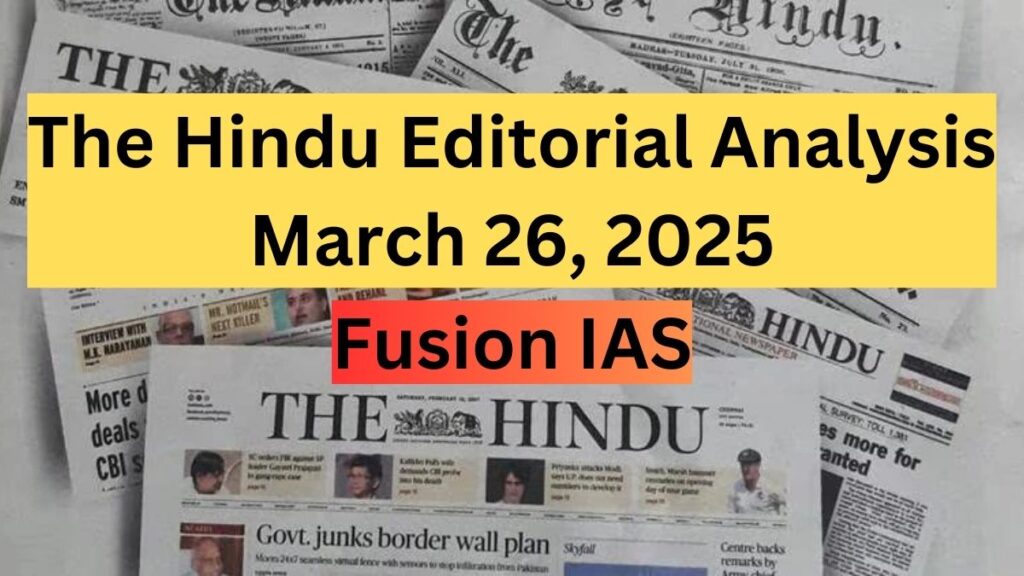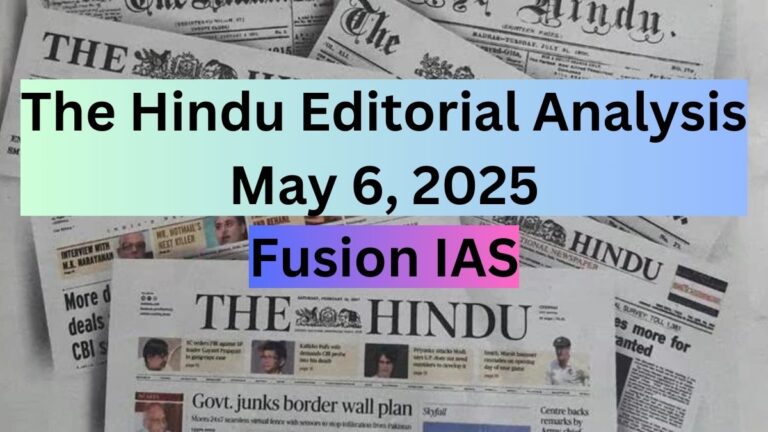
The Hindu Editorial Discussion is crucial for UPSC CSE preparation, offering in-depth analysis of current affairs, government policies, and socio-economic issues. It enhances critical thinking, answer-writing skills, and interview preparation by providing diverse perspectives on national and international developments. Regular editorial reading helps aspirants develop a balanced viewpoint, improving their essay writing and General Studies papers.
The ‘Great Abandonment’ of Afghanistan
The situation in Afghanistan has undergone a drastic transformation since the U.S. withdrawal in 2021. The Taliban’s resurgence has resulted in severe human rights violations, particularly against women, while global powers have either distanced themselves or engaged pragmatically with the regime. This article explores the geopolitical, humanitarian, and strategic dimensions of Afghanistan’s abandonment and India’s evolving policy approach.
1. Background: The U.S. Withdrawal and Its Consequences
(I) The U.S. withdrawal from Afghanistan in 2021 was a consequence of the 2020 Doha Agreement, which largely favored the Taliban and ignored the interests of the elected Afghan government.
(II) The withdrawal led to the rapid collapse of the Afghan Republic, allowing the Taliban to take full control without any commitment to political inclusion, women’s rights, or counter-terrorism assurances.
(III) The situation has worsened, with the Taliban imposing harsh restrictions, particularly on women and minorities, while consolidating their rule.
2. The Concept of ‘Great Abandonment’
(I) The term highlights how global powers, particularly the U.S. and Europe, have disengaged from Afghanistan’s internal crisis.
(II) Russia, China, and Pakistan have recognized the Taliban’s control by engaging with them diplomatically, while the U.S. has reduced financial aid.
(III) The absence of international pressure has emboldened the Taliban, worsening conditions for ordinary Afghans.
3. India’s Approach to Afghanistan
India has historically supported democratic forces in Afghanistan and invested in infrastructure, education, and humanitarian aid. However, its current policy reflects a shift towards pragmatism.
Engagement with Taliban 2.0
(i) India initially distanced itself from the Taliban but later reopened a “technical mission” in Kabul in 2022.
(ii) In 2025, India has reportedly considered expanding its presence and allowing a Taliban-appointed ambassador in New Delhi.
(iii) India’s Foreign Secretary Vikram Misri met Taliban Foreign Minister Mawlawi Amir Khan Muttaqi, signaling deeper engagement.
4. The Strategic Dilemma for India
India faces multiple challenges in deciding its Afghanistan policy:
A. Need for Engagement vs. Risk of Taliban Legitimization
(i) Some argue that engaging with the Taliban is necessary as they are in power and India must protect its interests.
(ii) However, legitimizing the Taliban could be risky, given their historical hostility towards India and their ties with anti-India terror groups like Lashkar-e-Taiba and Jaish-e-Mohammed.
B. Humanitarian Concerns vs. Security Considerations
(i) India has traditionally been a haven for Afghan refugees, yet it denied visas to those fleeing the Taliban in 2021.
(ii) Security concerns about infiltration by extremists are valid but must be balanced against humanitarian commitments.
(iii) Historically, Afghan students, traders, and professionals in India have been goodwill ambassadors, strengthening India-Afghanistan ties.
C. Losing Strategic Influence vs. Balancing Regional Interests
(i) Other regional players like China and Pakistan have increased their engagement, which could limit India’s influence in Afghanistan.
(ii) The Taliban’s internal divisions—between the Haqqani faction (which has engaged with India) and the Kandahari clerics—present an opportunity for India to maintain diplomatic leverage.
5. Policy Recommendations for India
To navigate Afghanistan’s evolving landscape, India must:
(i) Engage selectively: While some level of dialogue with the Taliban is necessary, India must also maintain ties with opposition forces and civil society.
(ii) Strengthen people-to-people ties: Reopen educational and medical visas for Afghans to preserve goodwill.
(iii) Leverage regional diplomacy: Work with Iran, Russia, and Central Asian nations to create a more balanced approach rather than allowing Pakistan and China to dominate engagement with the Taliban.
(iv) Advocate for women’s rights: Use India’s influence, including in cricket diplomacy, to push for women’s participation in Afghan society.
(v) Avoid full legitimization: Engaging with the Taliban should not mean recognizing them as the legitimate rulers of Afghanistan without preconditions on human rights and counter-terrorism commitments.
Conclusion
The “Great Abandonment” of Afghanistan highlights the consequences of a hasty U.S. withdrawal and the global community’s lack of sustained engagement. For India, a nuanced approach balancing strategic interests, humanitarian concerns, and long-term regional stability is essential. Engaging with the Taliban should not come at the cost of losing the trust of Afghan civil society and pro-democracy forces.
Disclaimer:
This analysis is based on the editorial content published in The Hindu and is intended solely for informational and educational purposes. The views, opinions, and interpretations expressed herein are those of the author of original article. Readers are encouraged to refer to the original article for complete context and to exercise their own judgment while interpreting the analysis. The analysis does not constitute professional advice or endorsement of any political, economic, or social perspective.
Follow Fusion IAS


